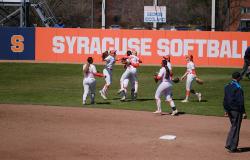Herculaneum. The Institute of Cultural Heritage Sciences (ISPC) and the “Antonio Zampolli” Institute of Computational Linguistics (ILC) of the National Research Council, the University of Pisa and the National Library of Naples (BNN) are organizing a medium-sized conference end of the ERC Advanced Grant 885222-GreekSchools project, funded by the European Research Council, at the prestigious ‘Vittorio Emanuele III’ National Library of Naples.
The GreekSchools project, led by Graziano Ranocchia of the University of Pisa in collaboration with the CNR-ISPC, the CNR-ILC and BNN, aims to publish a new annotated edition of the Review of the Philosophers of Philodemus of Gadara (110 – post 40 a. C.) and other works transmitted by the carbonized papyri of Herculaneum.
These, which survived thanks to the famous eruption of Vesuvius in 79 AD and were found in the mid-eighteenth century in the sumptuous Villa dei Papiri, are preserved in the Officina dei Papiri Ercolanesi of the Neapolitan library.
Among its main objectives GreekSchools is to develop investigative methods for the decipherment and study of precious manuscripts by applying the most advanced diagnostic imaging techniques available today (infrared and ultraviolet optical imaging, molecular and elemental imaging, thermal imaging, tomography, digital optical microscopy, etc.). Staff from CNR-ISPC, CNR-SCITEC and other European research centres, using mobile instruments from the Molab platform belonging to the European research infrastructure on Heritage Science E-RIHS, apply non-invasive techniques to opisthograph and stratified papyri in order to read text inaccessible on the reverse or hidden within multiple layers.
By combining these investigative techniques with the methods of philology and papyrology, the teachers and researchers of the Department of Philology, Literature and Linguistics of the University of Pisa are producing a more solid and extensive critical text of Philodemus’ Review of Philosophers through a new editorial system.
Finally, CNR-ILC staff is developing an innovative, web-based, open access, open source system supported by advanced automatic text analysis techniques, aimed at the collaborative edition in progress of the Herculaneum papyri and, in perspective, of other Greek and Latin papyri.
The project, lasting almost six years and worth around 2 and a half million euros, takes place mainly in Naples. The disciplines involved are papyrology and paleography, classical philology and the history of ancient philosophy, physics and chemistry, computational linguistics and the transversal sector of Digital Humanities. Today’s conference, divided into three sessions, which ideally reflect the internal structure of GreekSchools, aims to take stock of what has been done so far and a forecast of what still remains to be done and aspires to offer a new methodological paradigm to similar projects in the field of cultural heritage sciences.
Tags: Archaeology computational linguistics Herculaneum papyri




